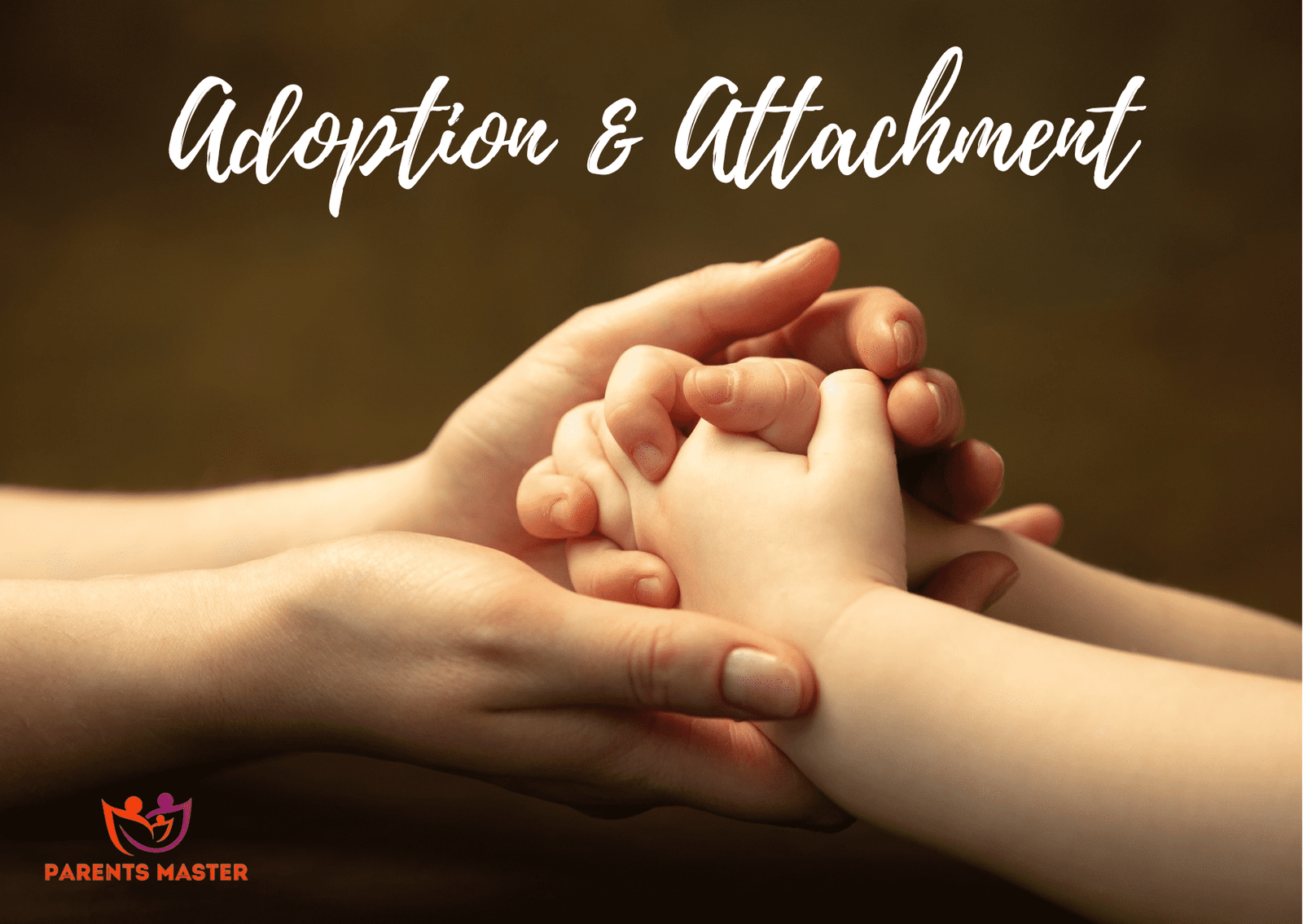Understanding Adoption and Attachment

Adoption, in general, gives children a second chance and provides them with opportunities to reach their potential in a safe, loving environment. They get new families, which is how adoption becomes one of the most fulfilling and selfless acts. A multitude of reasons are there as to why people choose to do it. In this regard, Adoption makes normal childhood issues of attachment.
Besides, a child also faces problems due to loss and self-image. Adopted children thus have to come to terms with and integrate both birth and adoptive families. Adoption is undeniably rewarding, but there are challenges associated with the process.
The case is intense when children experience pre-adoption adversity, leading to difficulties in establishing a secure bond. Awareness of the signs of disruptions to the attachment bond helps caregivers understand how to address the issues and also meet the child’s needs. Researchers always put effort into identifying the factors responsible for affecting the formation of secure attachments between adopted children and their caregivers.
When Primary Emotional Attachments Form?
It’s vital to consider that the first two years after birth are essential for forming healthy early attachment relationships. Children develop the “template” or “mental representation” of what a caregiver-child relationship looks and feels like. At just six weeks, children start to prefer their primary and secondary caregiver(s) over others. In this regard, the preference forms because children begin to develop trust that the caregivers will attend to their needs.
Also, this is the point where the child starts to understand that the caregiver will attend to their needs when they cry for food, love, and attention. The adoptive caregivers should utilize this early window of time to help a child understand whether other people are trustworthy and dependable. Also, it assists with the establishment of healthy levels of self-worth and confidence.
Understanding The Attachment Theory And Adoption
Early attachment bonds influence how a child views close relationships in childhood, adolescence, and adulthood. Relationships adopted children experience with the initial, early caregivers influence their ability to relate to their new caregivers. It develops into a pattern evident in adoptive children who experienced healthy, secure relationships with at least one of the early caregivers. This positive fledgling experience helps children develop positive expectations of their new caregivers, allowing them to make stable, secure attachments with them.
Children who experienced pre-adoption adversity and witnessed that early caregiver relationships were a disruptive or unsafe struggle to form secure attachments with the new adoptive family. What happens in most cases is that children’s early experiences teach them that their new caregivers might be unpredictable and unreliable. Also, they start considering them even frightening. Children are highly flexible and adaptive at forming new ideas regarding caregiver relationships.
Also, in some cases, they experience disruption in their early attachment bonds. Hardship and positive and constructive experiences alike can create templates and expectations of the world and the people. So what’s essential to note here is that consistent, healthy, and loving experiences with new caregivers help an adoptive child forge optimistic and balanced outlooks.
Pre-adoption Adversity and Attachment

Let’s take an example into consideration to understand this. The outcomes of over 25,000 orphans from Russian, Bulgarian, Romanian, and Ukrainian institutions were studied in the aftermath of the adoption by American families in the 1990s. These countries experienced particular hardship when the Soviet empire crumbled; prior to adoption, their children didn’t receive much sensory stimulation, basic resources, and healthy food resulting in extreme attachment and developmental difficulties.
The conclusion drawn from this study is that pre-adoption adversity is strongly associated with attachment difficulties. Also, this effect is quite evident in children who experienced severe neglect or maltreatment. Also, what happened is that most showed challenges in forming attachment bonds with their adoptive caregivers. Such conditions lead to severe difficulties in forming emotional bonds, leading to the ultimate “attachment disorder.”
Understanding The Attachment Disorder
An attachment disorder refers to a series of emotional and behavioral problems that develop in young children struggling to form expected bonds with primary caregivers, usually their parents. Attachment disorders typically are common in children who don’t receive consistent, attentive caregiving. What contributes to this condition is not receiving comfort when they cry as a baby. Also, they suffer from the disorder when their caregivers do not change them when they are hungry or wet.
What other experiences add up to the disorder include Receiving attention only when they act out or Caregivers inconsistently meeting their needs. Attachment disorder also often happens as a result of separation from caregivers. In this regard, it is worth understanding that Adoption Attachment disorder occurs for all adoptive children since they are vulnerable to experiencing separation from their primary caregivers.
Regardless of whether the early relationships were secure or insecure, the separation breaks the attachment bond. Some adoptive children also experience attachment bonds breaking multiple times when they move from placement to placement before reaching their permanent adoptive home.
Is there a relationship between Age and Adoption Attachment?
Yes, there is. Children adopted as babies receive continuous care from their adoptive parents, so it increases the likelihood of secure attachment forming. Older adoptive children tend to have at least one major break in attachment bonds. Children adopted at a later stage witness an increased chance of experiencing hardship before reaching their adoptive family, and often, it happens that forming secure attachments becomes more complex.
Children carry their mental representations of relationships they had with their previous caregivers into relationships with their new caregivers. In the case the experiences of relationships were negative up to the time of adoption, they will present a pre-existing insecure attachment. Children experience insecure early attachments and, in that case, may not get the same opportunities to reach developmental milestones similar to how securely attached children do.
However, it’s worth noting that the relationship between attachment and adoption is not simple or direct. A child’s developmental status can influence the formation of a secure attachment with new caregivers. Similarly, secure bonds influence a child’s development. So, there will be a high possibility for the child to learn how to regulate their emotions, hit developmental milestones, and develop a positive sense of self when they get the opportunity to develop secure bonds with their adoptive caregivers.
It’s very important for the caregivers to know the child’s history, let go of traditional parenting methods, set boundaries, and join a support group.
Final Words
Adoptive families can promote attachment, and for that, it’s vital for the adoptive parents to note that they should look forward to Achieving genuine attachment with their little one, which requires conscientious and routine work. It’s not always easy to gain a child’s love and trust, but anyone with enough dedication can accomplish it.
First and foremost, it’s crucial to learn as much as possible about the child’s background and history. Learning information about the pregnancy and the relationships the child has developed already provides adoptive parents a basis of understanding from which to build their relationship with the adoptee.
Related Articles
Feeding Your Baby: When To Start With Solid Foods.




